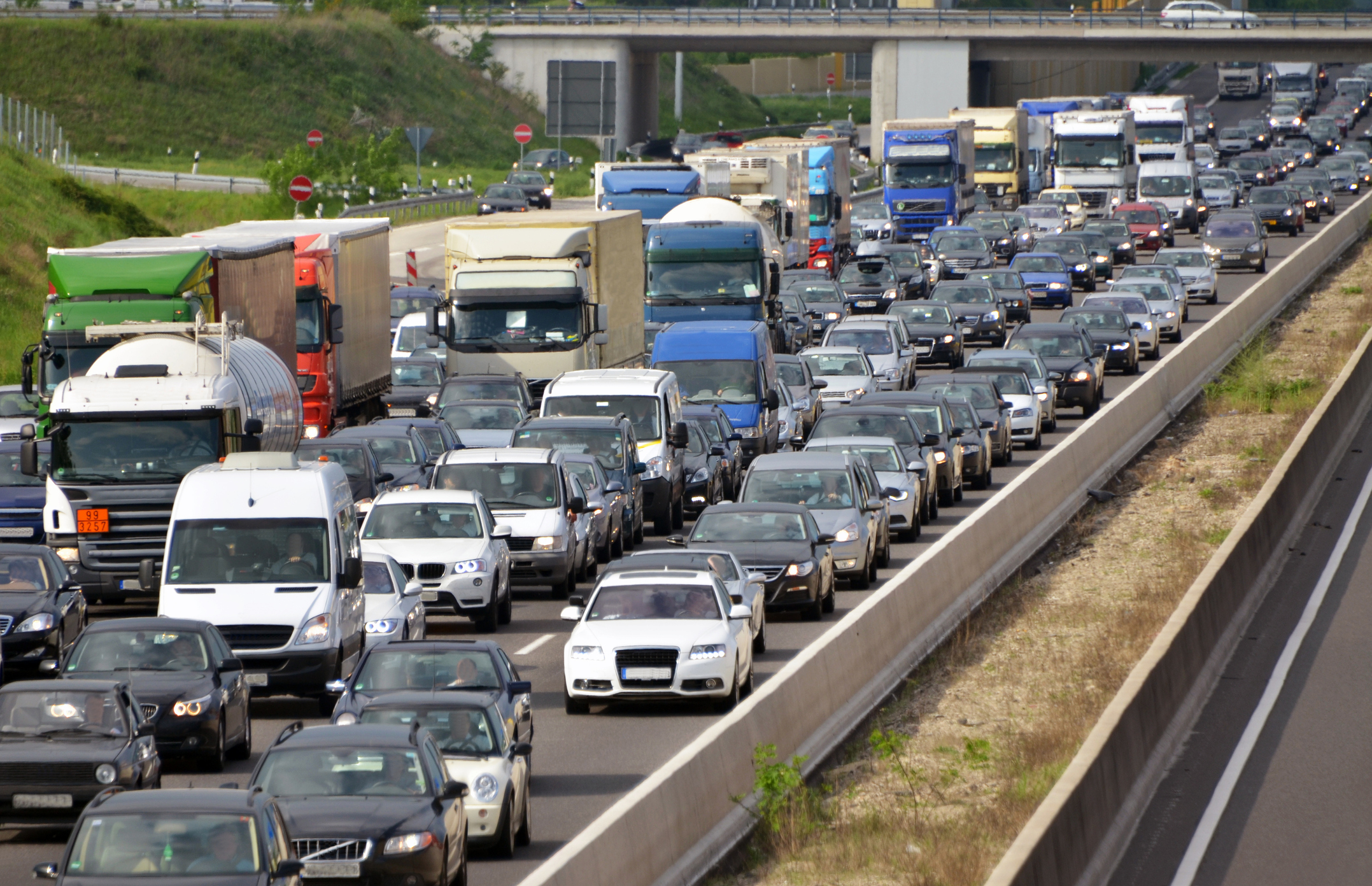In movies, pop songs, and car ads, driving on the highway is often portrayed as a liberating act – the highway a long and isolated stretch of road that symbolizes escape and freedom. But the legacy of the highway, past and present, is a far cry away from liberation.
States have built and expanded highways in ways that have displaced communities of color, destroyed culturally or environmentally sensitive areas, and established polluting traffic corridors leading to harmful health impacts in environmental justice areas. For an example, look to Brooklyn Center, Minnesota, where a historically low-income community of color is threatened by a proposal to expand Interstate 94 to “reduce congestion” and better connect more affluent, whiter neighborhoods. We know that highway expansion will lead to increased air pollution – and Brooklyn Center already leads the state in childhood asthma.
Our highway system continues to harm communities across the country, including in ways that intersect with the climate crisis. Historically redlined neighborhoods, typically communities of color, often lack street trees, safe pedestrian routes, and accessible public transportation. Given these conditions, residents in these communities often suffer from higher temperatures and worse air quality compared to residents in suburban white neighborhoods.
Fortunately, the federal Department of Transportation (USDOT) not only recognizes these injustices, but is also doing something about it, signaling to states that the status quo approaches to transportation must shift.
Stephanie Pollack, deputy administrator of the USDOT, recently released a memo to state DOTs that provides a starting point for rectifying the environmental injustices caused by highway construction. This memo prioritizes distributing funding from the recently passed Infrastructure Investment and Jobs Act to:
-
Improve safety for everyone on the road, including pedestrians and cyclists
-
Address existing environmental and health impacts of road-related water and air pollution
-
Include environmental justice communities in the design process of proposed projects
-
Reduce transportation-related emissions, including through the buildout of electric vehicles charging stations and other emerging technologies
-
Improve climate resilience in our built infrastructure in the face of the extreme weather events brought about by climate change.
This is a watershed moment for how the USDOT prioritizes new road projects. While highway expansion isn’t completely off the table, the memo includes assurances that any project that may “induce [traffic] demand” will face tighter scrutiny through lengthy project approval processes and will heavily favor projects that attempt to redress environmental injustices in frontline communities.
So how can advocates and community leaders use this moment to reenvision the future of transportation while addressing the impacts of exclusionary urban planning practices, induced demand, and the climate crisis?
Across the country, there are successful models and coalitions advocating for a different future for our transportation systems, and several Sierra Club chapters are involved in these ongoing efforts.
-
In Wisconsin, the Chapter and local partners have presented the state DOT with an alternative (known as “Fix at Six”) to a local highway expansion of the I-94 East West Corridor. “Fix at Six'' focuses on building out a robust rapid transit bus corridor, with safe walking and biking connections. The plan calls for investments in a more equitable transportation system that will revitalize neighborhoods damaged by the highway’s original construction, reduce emissions, minimize pollution run-off into local rivers, and restore wetlands and green space.
-
In Maryland, the Chapter and many partners are working to stop the expansion of the Capital Beltway and I-270 highways, which would exacerbate air and climate pollution, destroy hundreds of acres of forest canopy, adversely impact historic sites, and cause further harm to communities already experiencing environmental injustices. The coalition is advocating to replace the flawed proposal with a new vision for equitable and sustainable transportation.
-
In Boise, the Idaho Chapter co-led an effort to form the Canals Connect Community Coalition, a group of individuals representing conservation, safe bicycle and pedestrian development, public health and housing affordability. The group’s efforts resulted in a city-wide Pathway Master Plan that proposes to fund 118 miles worth of new pathway projects in underserved neighborhoods, safe routes to schools, and increased access to safe routes to schools, walking and cycling infrastructure, and public transportation.
-
In Minnesota, the North Star Chapter is supporting the Twin Cities Boulevard, an environmental justice alternative to the state DOT's underwhelming "Rethinking I-94" highway expansion project between downtown Minneapolis and Saint Paul. This bold community vision would reclaim freeway land for surrounding communities and include clean transportation options like Bus Rapid Transit.
- In Lousiana, the Delta Chapter is working to halt the governor's proposed budget that would allow for the bulk of surplus infrastructure federal funds to go towards new bridges that route through Black, Brown and poor neighborhoods and to expand highways. Instead of these projects, the Chapter is proposing and laying the foundation for alternatives for Louisianans that include buses and rail. Staff and volunteers are throwing down during legislative session to gain consensus among legislators to "Fix it First" (which means to focus on repairs), address the $14 billion maintenance backlog, and use the Bipartisan Infrastructure Law funding for new projects that center clean public transit options for all.
The country’s built infrastructure, the roads and transit that connect our towns and cities, are not going to change overnight with this infusion of new infrastructure funding after decades of development. But coupled with equitable, community-led leadership and strategic advocacy, this funding can help set us up on a trajectory for a cleaner, more just and climate-friendly transportation system that works better for us all.
